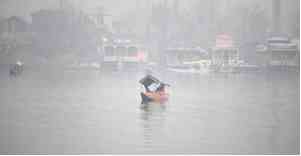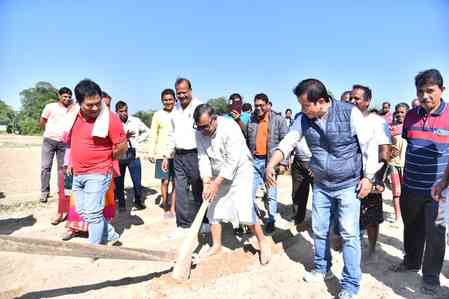Heavy rainfall; Widespread destruction puts life out of gear
This year, relentless rainfall has thrown life out of gear in Himachal Pradesh, Jammu & Kashmir, Uttarakhand, Punjab, and Rajasthan. Cloudbursts and torrential rains have swollen the rivers Ravi, Sutlej, Beas, Yamuna, and Ganga, which are currently flowing above danger levels. The flooding has caused widespread destruction to infrastructure, houses, roads, bridges, and standing crops.

This year, relentless rainfall has thrown life out of gear in Himachal Pradesh, Jammu & Kashmir, Uttarakhand, Punjab, and Rajasthan. Cloudbursts and torrential rains have swollen the rivers Ravi, Sutlej, Beas, Yamuna, and Ganga, which are currently flowing above danger levels. The flooding has caused widespread destruction to infrastructure, houses, roads, bridges, and standing crops.
In Himachal Pradesh, heavy rainfall has forced dam authorities to open floodgates of several reservoirs, creating a situation of havoc for residents of low-lying areas. The Beas and Sutlej rivers are in spate due to incessant rains and cloudbursts in Kullu and Manali, resulting in severe damage to bridges, roads, houses, and other infrastructure. Rising water levels in the Bhakra and Pong dams, coupled with heavy inflow from the Chakki river near Pathankot, have further aggravated the flood situation. The flooding has particularly affected Sultanpur Lodhi in Kapurthala district, while the merging of Sutlej and Beas near Harike Pattan has forced authorities to throw open the gates there, releasing water downstream towards Hussainiwala. Similarly, the Ravi river is overflowing, with authorities opening the floodgates of Ranjit Sagar Dam and releasing water through the Madhopur Headworks.
In Jammu & Kashmir, the worst-hit areas include Kathua, Jammu (particularly along the Tawi river), and Doda. Cloudbursts and torrential rains have turned rivulets and rivers into raging torrents, causing devastation in low-lying areas. The Chenab river too is in spate, washing away infrastructure and damaging houses, while vehicular traffic on the national highways has slowed drastically due to flooding and landslides.
Uttarakhand is witnessing a similar crisis, with the Ganga and Yamuna rivers flowing above danger marks at several locations. The situation has been exacerbated by continuous heavy downpours and cloudbursts.
Meanwhile, Rajasthan, usually known for scanty rainfall, has also been battered by floods this season. Districts like Sawai Madhopur have witnessed severe damage to agricultural land and infrastructure, underscoring the unusual and destructive nature of this year’s monsoon.
The floods have dealt a severe blow to farmers, as standing crops lie submerged under waterlogged fields. While no single entity can be blamed, experts point to a combination of factors—climate change, rampant deforestation, indiscriminate construction of tunnels and highways in hilly areas, and the unchecked growth of concrete settlements near riverbanks—as contributors to cloudbursts, flooding, and the worsening impact of natural calamities.
Authored by:
Rajat Kumar Mohindru
Journalist
Jalandhar City
(Views are personal)


 Rajat Kumar
Rajat Kumar 










